
Kimon Georgiev Stoyanov was a Bulgarian general who was the Prime Minister of the Kingdom of Bulgaria from 1934 to 1935 and again from 1944 to 1946. He is considered a "master in the art of coup d'etats."

The Fatherland Front was a Bulgarian pro-communist political resistance movement, which began in 1942 during World War II. The Zveno movement, the communist Bulgarian Workers Party, a wing of the Bulgarian Agrarian National Union and the Bulgarian Social Democratic Workers Party all became part of the OF. The constituent groups of the OF had widely contrasting ideologies and had united only in the face of the pro-German militarist dictatorship in Bulgaria. At the beginning, the members of the OF worked together, without a single dominating group. Professional associations and unions could be members of the front and maintain their organisational independence. However, the Bulgarian Communist Party soon began to dominate. In 1944, after the Soviet Union had declared war on Bulgaria, the OF carried out a coup d'état and declared war on Germany and the other Axis powers. The OF government, headed by Kimon Georgiev of Zveno, signed a ceasefire treaty with the Soviet Union. In the summer of 1945 most of BANU led by Nikola Petkov and most of the Social-Democrats had left the OF and became a large opposition group which later on after the 1946 Grand National Assembly election would become a coalition named "Federation of the village and urban labour" with 99 MPs out of 465.

Damyan Velchev or Velcev was a Bulgarian politician and general.
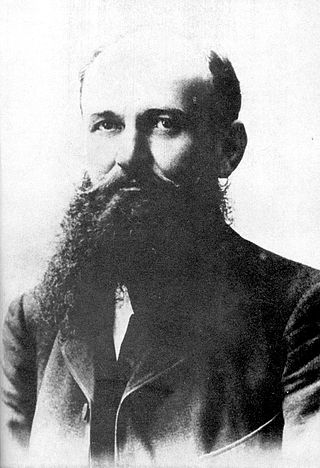
Gyorche Petrov Nikolov born Georgi Petrov Nikolov, was a Bulgarian teacher and revolutionary, one of the leaders of the Internal Macedonian Revolutionary Organization (IMRO). He was its representative in Sofia, the capital of Principality of Bulgaria. As such he was also a member of the Supreme Macedonian-Adrianople Committee (SMAC), participating in the work of its governing body. During the Balkan Wars, Petrov was a Bulgarian army volunteer, and during the First World War, he was involved in the activity of the Bulgarian occupation authorities in Serbia and Greece. Subsequently, he participated in Bulgarian politics, but was eventually killed by the rivaling IMRO right-wing faction. According to the Macedonian historiography, he was an ethnic Macedonian.
The Bulgarian coup d'état of 1934, also known as the 19 May coup d'état, was a coup d'état in the Kingdom of Bulgaria carried out by the Zveno military organization and the Military Union with the aid of the Bulgarian Army. It overthrew the government of the wide Popular Bloc coalition and replaced it with one under Kimon Georgiev.
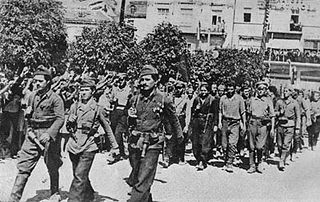
The 1944 Bulgarian coup d'état, also known as the 9 September coup d'état, was a coup that overthrew the government of Kingdom of Bulgaria carried out on the eve of 9 September 1944. During the People's Republic of Bulgaria it was called using the propaganda term People's Uprising of 9 September – on the grounds of the broad unrest and Socialist Revolution – as it was a turning point politically and the beginning of radical reforms towards Soviet-style socialism.

Manush Georgiev, also known as Manush voivoda, was a Bulgarian revolutionary from Ottoman Macedonia, a member of the Internal Macedonian-Adrianople Revolutionary Organization. He graduated from the Bulgarian schools in Strumitsa and Serres, and was later appointed as a teacher in the villages of Barbarevo, Robovo, Borievo and Stinik.

Capital punishment in Bulgaria was abolished on December 12, 1998 with the last execution, that of attempted saboteur Georgi Alinski, having been carried out on November 4, 1989. The Parliament of Bulgaria had introduced a moratorium on executions on July 7, 1990 and Protocol 6 of the European Convention on Human Rights came into force on October 1, 1999.
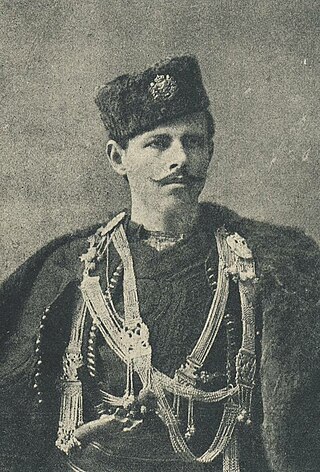
Dimche Sarvanov, also Dimko Mogilcheto or Dimche Mogilche, was a Macedonian Bulgarian revolutionary and a member of the Internal Macedonian-Adrianople Revolutionary Organization.
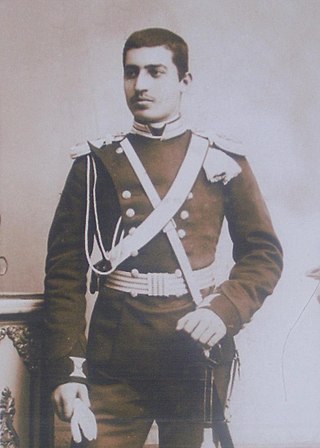
Petar Georgiev Darvingov was a Bulgarian officer, revolutionary and military historian, corresponding member of Bulgarian Academy of Sciences from 1932.

Yugoslav irredentism was a political idea advocating merging of South Slav-populated territories within Yugoslavia with several adjacent territories, including Bulgaria, Western Thrace and Greek Macedonia. The government of the Kingdom of Yugoslavia sought the union with Bulgaria or its incorporation into Yugoslavia. Since 1945, the Socialist Federal Republic of Yugoslavia under Josip Broz Tito sought to create an integral Yugoslavia that would incorporate within its borders: Greek Macedonia and Thrace, Albania, Bulgaria, portions or the entirety of Austrian Carinthia, and for a time the entire Italian region of Friuli-Venezia Giulia.

Daria Kozmova Vassilyanska (1928-2017) was a Bulgarian artist.

Niš operation was an offensive operation of the Bulgarian army, supported by Yugoslav Partisans against German Army Group E to secure the left flank of the Third Ukrainian Front of the Red Army.

Ginyo Gochev Ganev was a prominent Bulgarian politician, MP and national ombudsman. He is known as "Man-Parliament" as a deputy in 8 consecutive National Assemblies. On 13 April 2005 he was selected from the 39 National Assembly for the first National Ombudsman of the Republic of Bulgaria.

Naum Hristov Tomalevski was a Bulgarian revolutionary, participant in the Macedonian revolutionary movement, member of the Internal Macedonian Revolutionary Organization (IMRO).

Dimitar (Dimo) Totev Kazasov was a Bulgarian politician and journalist, initially from the Bulgarian Workers' Social Democratic Party (BRSDP), and later from several other organizations. He joined the governments formed after the 1923 and 1944 coups. He was MP in the XVIII (1919–1920), XXI (1923–1927), XXVI (1945–1946) National Assembly and in the VI Grand National Assembly (1946–1949).

Petar Traykov Girovski was a Bulgarian Army officer, later activist of the Internal Macedonian Revolutionary Organization. Afterwards he became close to some communist circles and after the Second World War participated in Yugoslav and Bulgarian politics.
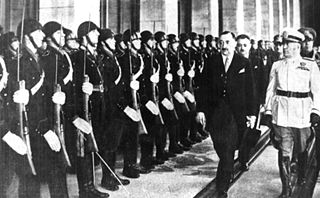
The extent of fascism in Bulgaria is contentious. Many authors state that it never became a mass movement, remaining marginal there, and proved considerably less successful than in the neighboring Balkan states. Bulgaria's fascists were not only weak, divided and lacking clear ideology, but their worldview differed significantly from that of Italian Fascism and German Nazism. Thus a consensus has been reached between Bulgarian and international experts that Bulgaria's agrarian society and its monarchic system were the barriers before the fascist practices and establishment of fascist regime in the country, while Bulgaria's political system preserved a relative pluralism. An alternative opinion is that some Bulgarian organizations with considerable membership, activity, and social presence had fully developed fascist ideology by the late 1930s, but they neither came to power, nor participated in the government of the country. In fact, fascist organizations did not take power within the framework of the royal dictatorships, but discourses close to fascism can be found in then Bulgarian governing elite.

Vladimir Tomov Poptomov was a Bulgarian politician and diplomat, prominent member of the Bulgarian Communist Party and statesman of the People's Republic of Bulgaria.
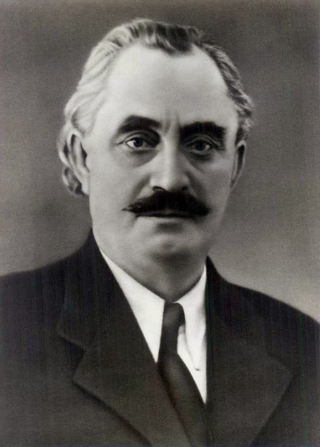
The First Dimitrov Government was the sixty-fifth government of Bulgaria, elected by the 6th Great National Assembly of November 23, 1946. The government lasted until December 11, 1947, after which the second government of Georgi Dimitrov was elected.The cabinet, headed by Georgi Dimitrov, was composed of political figures of the Fatherland Front (Bulgaria), namely those from Political Circle "Zveno", Bulgarian Communist Party, BRSDP, Bulgarian Agrarian National Union and non-partisans.



















